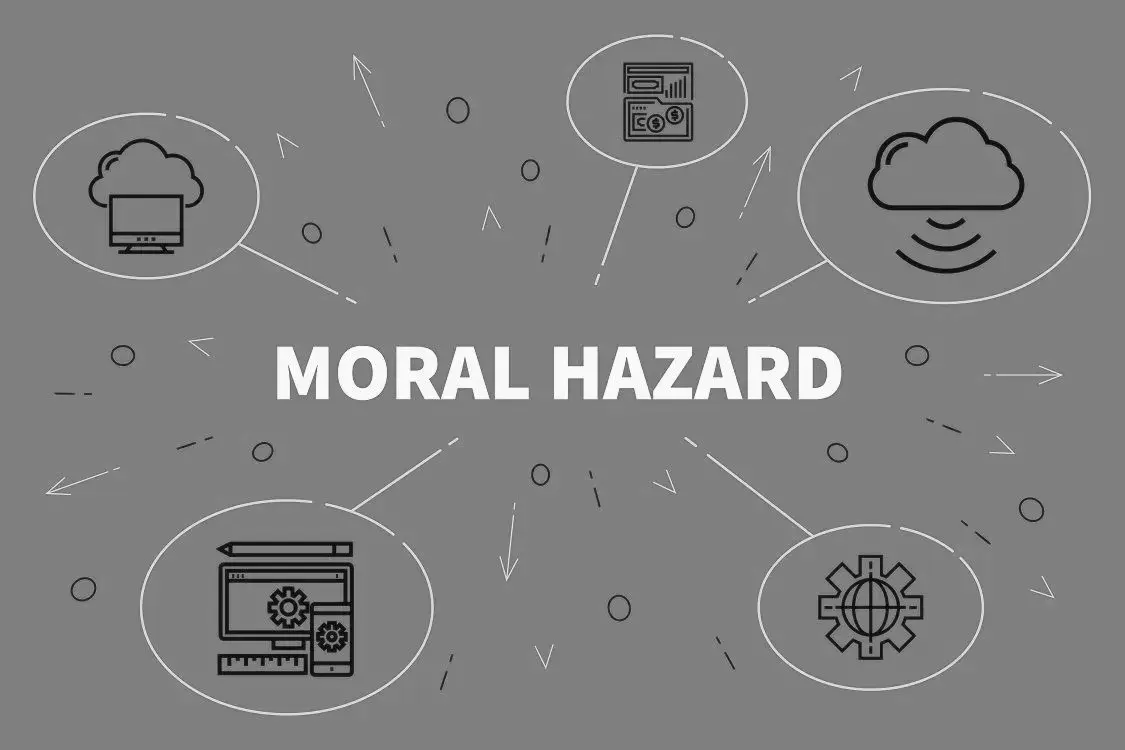Introduction
In the realm of decision-making, the human mind is prone to biases and fallacies that can lead us astray. One such mental model that profoundly impacts our choices is the concept of Moral Hazard. Coined in the field of economics, Moral Hazard refers to the phenomenon where individuals or groups, protected from the negative consequences of their actions, become more likely to take risks or act irresponsibly. This blog post aims to delve into the nature of Moral Hazard, explore its relevance in decision-making processes, examine its occurrence in various contexts, highlight the psychological underpinnings behind this bias, and equip readers with practical strategies to avoid succumbing to its allure.
Defining Moral Hazard and Its Significance
At its core, Moral Hazard encompasses situations where an individual’s behavior is altered due to the presence of incentives that shift the burden of risk to others. Originally used in the realm of insurance, it has since expanded to other domains such as finance, business, and public policy. Moral Hazard arises when people are shielded from the negative consequences of their actions, leading to a divergence between their interests and the overall welfare of the system.
This mental model is particularly relevant in decision-making processes because it can distort incentives, compromise accountability, and create adverse outcomes. When individuals or groups are insulated from the costs or risks associated with their choices, they may engage in reckless behavior or make suboptimal decisions, oblivious to the potential consequences. Understanding and recognizing the presence of Moral Hazard is crucial for mitigating its adverse effects and fostering more responsible decision-making.
Psychological Underpinnings and Biases Contributing to Moral Hazard
Moral Hazard finds its roots in human psychology and is influenced by several cognitive biases and heuristics. One prominent bias that contributes to Moral Hazard is the phenomenon of optimism bias. Humans tend to be overly optimistic about the outcomes of their actions, underestimating the probability of negative events occurring. This bias can lead individuals to believe that they are less susceptible to negative consequences, making them more likely to engage in risky behavior when shielded from the risks.
Furthermore, the principal-agent problem, another psychological underpinning, exacerbates Moral Hazard in various contexts. In situations where one party (principal) delegates tasks to another party (agent), misaligned incentives can arise. The agent, aware of their limited accountability or the principal’s limited oversight, may take actions that prioritize their own interests at the expense of the principal’s objectives. This misalignment of interests can result in reckless or self-serving behavior, perpetuating Moral Hazard.
Examples of Moral Hazard in Different Contexts
- Personal Life Decisions: Imagine an individual who has comprehensive health insurance that covers the costs of medical treatments. This person might be more inclined to engage in unhealthy lifestyle choices, such as smoking or neglecting exercise, because they bear minimal financial consequences for their actions. By relying on the insurance coverage, they disregard the potential long-term health risks associated with their behaviors.
- Business Scenarios: In the financial world, the Moral Hazard of “too big to fail” presents a significant concern. When financial institutions or corporations are perceived as being immune to failure due to government bailouts or implicit guarantees, they are incentivized to take excessive risks. This occurs because the potential gains from risky actions are privatized while the costs are socialized. Consequently, these institutions may engage in high-risk investments or speculative activities, leading to severe economic repercussions.
- Public Policy-Making: Government safety nets, such as unemployment benefits or welfare programs, are essential for supporting individuals during challenging times. However, if the benefits are overly generous or prolonged without adequate checks and balances, individuals may become complacent, disincentivizing them from actively seeking employment or pursuing self-sufficiency. The safety net, intended as a temporary support system, inadvertently fosters dependency, creating a cycle of Moral Hazard.
Identifying and Avoiding Moral Hazard
- Awareness: Developing awareness of the presence of Moral Hazard is crucial. By recognizing situations where incentives or protections may distort decision-making, individuals can actively assess their choices more objectively. Stay vigilant for signs of misaligned incentives, limited accountability, or potential risks being shifted to others.
- Evaluate Long-Term Consequences: When making decisions, consider the long-term implications and potential risks that may not be immediately apparent. Reflect on how the absence of negative consequences can influence your behavior and affect the broader system or stakeholders involved.
- Foster Accountability: Emphasize personal responsibility and accountability in decision-making. Avoid situations where your actions are shielded from repercussions or where the risks are borne by others. Actively seek transparency, feedback, and oversight to align incentives and promote responsible behavior.
- Mitigate Biases: Be mindful of cognitive biases that contribute to Moral Hazard, such as optimism bias. Make a conscious effort to challenge overly optimistic assumptions and seek diverse perspectives. Engage in critical thinking and seek evidence-based reasoning to counteract biases and make more informed choices.
Conclusion
Moral Hazard is a pervasive mental model that can significantly impact decision-making processes. By recognizing its presence and understanding the psychological underpinnings that contribute to this bias, individuals can make more rational and responsible choices. Awareness of Moral Hazard enables us to navigate situations where incentives may distort our judgment and empowers us to mitigate the adverse effects it can have on our personal lives, businesses, and society as a whole. By actively seeking accountability, evaluating long-term consequences, and mitigating cognitive biases, we can make better decisions that align with our long-term interests and contribute to the overall welfare of the systems in which we operate.
